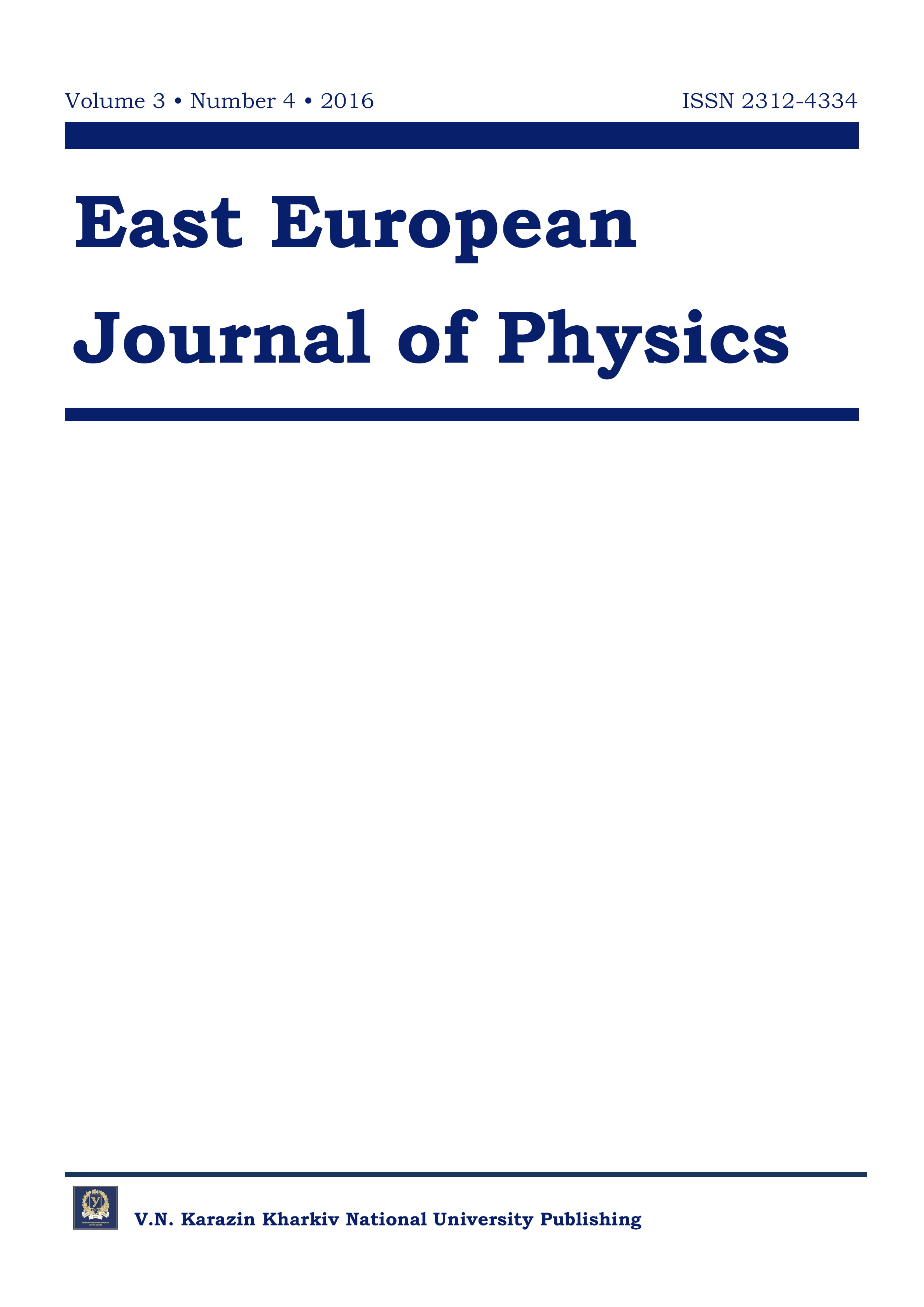Classification of Particles at Arbitrary Quantity of Generations. I. Hadrons
Abstract
New classification of particles is proposed. This classification is based on U(Nf,g) ×SU(3c)×SU(4, fs)×O(3) -group, where U(Nf,g) corresponds to the particle generations, SU(3,c) - to the color, SU(4,fs) - to the flavor and the spin (instead of known SU(6,fs) -group), and O(3) - to the orbital excitation with the L -momentum. The Nf -number equals the quantity of fermion generations. From the convergence of the integrals corresponding to the Green functions for generalized Dirac equations and the continuity of these functions it follows that the minimal quantity of the Nf -number equals six. The homogeneous solutions of derived equations are sums of fields, corresponding to particles with the same values of the spin, the electric charge, the parities, but with different masses. Such particles are grouped into the kinds (families, dynasties) with members which are the particle generations. For example, the electronic kind (e1 = e, e2 = μ, e3 =τ , e4, e5, e6, ), the kind of up-quarks (U1 = u, U2 = c, U3 = t, U4, U5, U6, ⋅⋅ ), and the kind of down-quarks (D1 = d, D2 = s, D4 = b, D4, D5, D6, ⋅⋅ ) can exist. Massless neutrino can be one only. The photonic and the gluonic kinds must include massive particles in addition to usual the photon and the gluon. At NF = 6 the nucleons and Δ(1232) belong to the 56×1×20×1 - representation. Lagrangians for the generalized Dirac equations of arbitrary order are derived.
Downloads
References
Treiman S.B., Jaсkiw R., Gross D.J. Lectures on current algebra and its applications. - Princeton: Princeton Univ. Pres., 1972; Moscow: Atomizdat, 1977. - P. 93. (in Russion)
Kulish Yu., Rybacuk E.V. Necessary generalization of Klein-Gordon and Dirac equations and existence of particle generations // Problems of Atomic Science and Technology. – 2012. – No.1 (77). - P. 16–20.
Kulish Yu. V., Rybachuk E.V. Divergences of integrals for Green functions and necessary existence of particle generations // Journal of Kharkiv National Univ. - 2011. – No.955. - Iss.2(50). - P. 4-14.
Kulish Yu.V. Elimination of singularities in causal Green functions of generalized Klein-Gordon and Dirac equations on light cone // EEPJ. - 2016. - Vol. 3. – No.3. – P. 73-83.
Nguen Van Xieu. Lectures on theory of unitary symmetry for elementary particles. – Moscow: Atomizdat, 1967. – 344p. (in Russion)
Bogolubov N.N. Theory of symmetry of elementary particles. High-energy physics and theory of elementary particles. - Kiev: Naukova dumka, 1967. - P. 5-112. (in Russion)
Close F.E. An introduction to quarks and partons. - London, New York, San Francisco: Academic Press, 1979; Moscow: Mir, 1982. – P. 150. (in Russion)
Korn G.A., Korn T.M. Mathematical handbook for scientists and engineers. Definitions, theorems and formulas for reference and review. – New York, San Francisco, Toronto, Ljndon, Sydney: Mc Graw Book Company, 1968; Moscow: Nauka, 1978. - P.34. (in Russion)
Esl’sgol’ts L.E. Variational calculus. – Moscow: Gostechizdat, 1952. (in Russion)
Myshkis A.D. Mathematics. Special curses for higher technical schools. – Moscow: Nauka, 1971. - 632p. (in Russion)
Zima V.G., Nurmagambetov A.Yu. Particle physics from atoms to quarks. – Kharkov: Karazin N.V. Kharkov National University, 2014. – 266p. (in Russion)
Feynman R.P., Kislinger M., Ravndal F. Current matrix elements from a relativistic quark model // Phys. Rev. D. - 1971.-Vol.3. – No.11. - P. 2706 – 2732.
Feynman R.P. Photon-hadron interactions. – Massachusetts: W.A. Benjamin, Inc. Reading, 1972; Moscow: Mir, 1975. - 390 p. (in Russion)
Gasiorowicz S. Elementary particle physics. - New York-London-Sydney: John Wiley&Sons, Inc; Moscow: Nauka, 1969. – 744p. (in Russion)
Authors who publish with this journal agree to the following terms:
- Authors retain copyright and grant the journal right of first publication with the work simultaneously licensed under a Creative Commons Attribution License that allows others to share the work with an acknowledgment of the work's authorship and initial publication in this journal.
- Authors are able to enter into separate, additional contractual arrangements for the non-exclusive distribution of the journal's published version of the work (e.g., post it to an institutional repository or publish it in a book), with an acknowledgment of its initial publication in this journal.
- Authors are permitted and encouraged to post their work online (e.g., in institutional repositories or on their website) prior to and during the submission process, as it can lead to productive exchanges, as well as earlier and greater citation of published work (See The Effect of Open Access).








